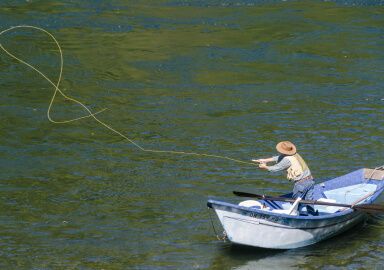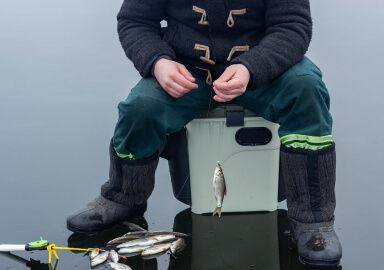Dentex
Dentex are a group of medium-sized, snapper-type, bottom-living predatory fish species found mostly in the eastern Atlantic Ocean.
View 10 listings
10
listings
–
price starting from
3
countries
–
to the nearest trip
Where and When?
Due to similarities, some of the information on species is a little confused. Both the above species can be found from the southern United Kingdom shore round France, Spain and into the Mediterranean Sea and southwards to the North African Coast. Common dentex tend to be caught more in the northern areas and into the Black Sea and are rarely caught south of Morocco, while pink dentex extend down the Atlantic Ocean coast as far south as Angola. The juveniles of both species tend to be found close to shore in shallow water and, generally, larger specimens are located in deeper water down to about 200 m. (700 ft.). Dentex are usually bottom loving fish and can be found on sandy or hard bottoms but often seem to congregate around structures such as reefs and wrecks. These species can be caught throughout the year, but the warmer months are favoured and most fishing is carried out in daytime. The best localities for both species are probably islands in the Mediterranean Sea, principally the Balearic Islands, Sicily and some of the Greek Islands.
About Dentex
Dentex are fish of a genus of the Sparidae family that contains many “breams” and “snappers”. The name “dentex” is Latin for “teeth” and all 14 members of the group have massive molar type teeth for grinding prey. The two most popular angling members of the genus are the common (Dentex dentex) and pink (D. gibbosus) dentexes. The common dentex, which is not always the commonest species, has greyish or bluish coloring, while the pink dentex features, appropriately to the name, an obvious pink, orange, or reddish hue. The Latin for “hump” is “gibbosus” and large specimens of both species have a large hump on their heads and an oval, compressed body.
Both species inhabit similar areas and feed on small fish and invertebrates, principally molluscs and cephalopods (squid and octopi). Common and pink dentex appear to reach similar sizes, about 100 cm. (36 in.) and 16 kg. (35 lbs.) for the former and 106 cm. (41,7 in.) and 16.4 kg. (36,2 kgs.) but a more common size for a “good” dentex is around 50 cm. (19,7 ins.). All dentex are usually solitary as adults except during spring spawning season when loose groups of several fish aggregate.
How to Catch?
Both species of dentex can be fished for in the same manner and, as both species favour similar areas and foods, there is no easy way to target just one species. Recreational anglers catch dentex from the shore or boat but, as larger specimens tend to be in deeper waters, most shore fishing is from cliffs or where deep water is close inshore. As dentex usually feed close to the bottom, fishing from a cliff in rocky areas can be challenging but often worthwhile. The favoured methods are usually spinning, using fairly large bright lures, or the use of live fish bait. In many areas boat fishing, using locally chartered boats who have the necessary expertise, equipment and bait, are the best bet.
Fishing can involve either trolling, drifting, or an anchored boat, and natural bait or artificial lures are used. The trick is to get whatever bait you’re using right down to near the bottom where the fish are feeding and so vertical jigging, using a wide variety of lures, is popular. Natural baits, using squid or fish, also produce results if the baits are held a couple of meters above the sea bottom. No licences are necessary but there is a general, sensible, size limit of 30 cm. (12 in.) and 15 fish. In the eastern Atlantic Ocean dentex are one of the larger, and more exciting, recreational fish targeted and local operators can often assist with critical information that can almost ensure success.





